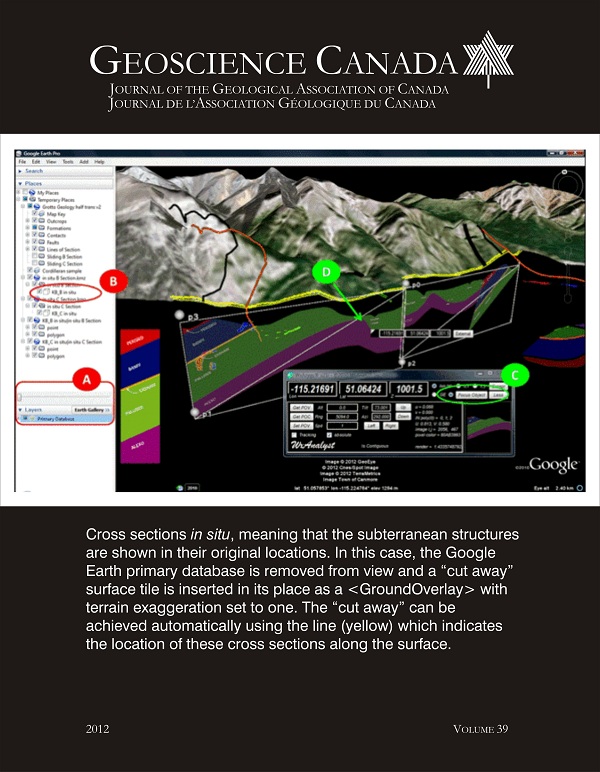Published 2012-11-30
How to Cite
Abstract
This article is designed to provide a synopsis of the application of LAICP-MS to U-Pb geochronology of accessory minerals, in standard polished thin sections, using modern 193 nm ArF excimer laser ablation (LA) and quadrupole inductively coupled plasma mass spectrometry (Q-ICP-MS) instrumentation. During about the last five years, Q-ICP-MS manufacturers (e.g. Agilent, Thermo Scientific, Perkin Elmer, Bruker Daltonics) have introduced new instruments or interfaces with higher sensitivity and lower backgrounds, compared to the previous generation of instruments. ArF excimer laser systems built by Resonetics (RESOlution™ M-50 and S-50), NewWave Research (NWR-193™), Photon Machines (Excite™ and Analyte G2™), and Coherent (GeoLas™), have also expanded their capabilities in a relatively short period of time. There has also been a significant leap in software development and laser control, which, when matched with sophisticated offline data processing has increased the overall efficiency of the technique.
This article begins with a background section designed to provide the basic bibliography and theory of laser-target interaction for nanosecond and femtosecond lasers. We then describe enhancements in ICP-MS sensitivity, the importance of the laser-ablation cell, smoothing devices, and synchronized hardware and software controls. We also provide examples of how these recent advances have dramatically increased the efficiency (e.g. cost per analysis), precision and accuracy of in situ U-Pb geochronology of accessory minerals using 193 nm excimer LA-ICP-MS. Demonstration datasets are based on the instrumentation installed at the University of New Brunswick, and provide examples of the general capabilities of excimer LA-ICP-MS for detailed in situ U-Pb geochronology.
SOMMAIRE
Le présent article constitue un abrégé sur l’application de la spectroscopie de masse à plasma inductif à ablation par laser (ICP-MS) à la géochronologie U-Pb des minéraux accessoires en plaques minces polies normales, en utilisant une version moderne d’un laser excimère ArF d’ablation avec la spectrométrie de masse quadripolaire à plasma à couplage inductif (Q-ICPMS). Au cours des cinq dernières années environ, les manufacturiers de Q-ICPMS (Agilent, Thermo Scientific, PerkinElmer, Bruker Daltonics, par exemple) ont présenté de nouveaux instruments ou interfaces de meilleure sensibilité et de moindre bruit de fond par rapport aux générations d’instrument précédentes. Les systèmes laser excimère ArF construits par Resonetics (RESOlutionMC M-50 et S-50), newWave Research (NWR-193MC), Photon Machines (ExciteMC et AnalyteG2MC), et Coherent (GeoLasMC) ont eux-aussi amélioré leurs capacités dans une période relativement courte. Il y a également eu une avancée significative dans le développement de logiciels et de contrôle du laser, ce qui, combiné à des traitements de données hors ligne sophistiqués a augmenté l'efficacité globale de la technique. Cet article commence par un rappel de la bibliographie de base et de la théorie de l'interaction laser-cible pour les lasers nanosecondes et femtosecondes. Nous traitons ensuite des améliorations de sensibilité de l’ICP-MS, de l’importance de la cellule d’ablation par laser, des dispositifs de lissage, et des contrôles synchronisés matériels et logiciels. Nous donnons également des exemples de la façon dont ces progrès récents ont considérablement augmenté l'efficacité (par exemple le coût par analyse), la précision et l'exactitude de la géochronologie U-Pb in-situ sur minéraux accessoires par ICP-MS à ablation par laser excimère 193 nm. Les jeux de données de la démonstration qui proviennent de l’instrumentation installée à l’University of New Brunswick, donnent des exemples des capacités générales de l’ICP-MS à ablation par laser excimère pour l’analyse géochronologique U-Pb in situ.
